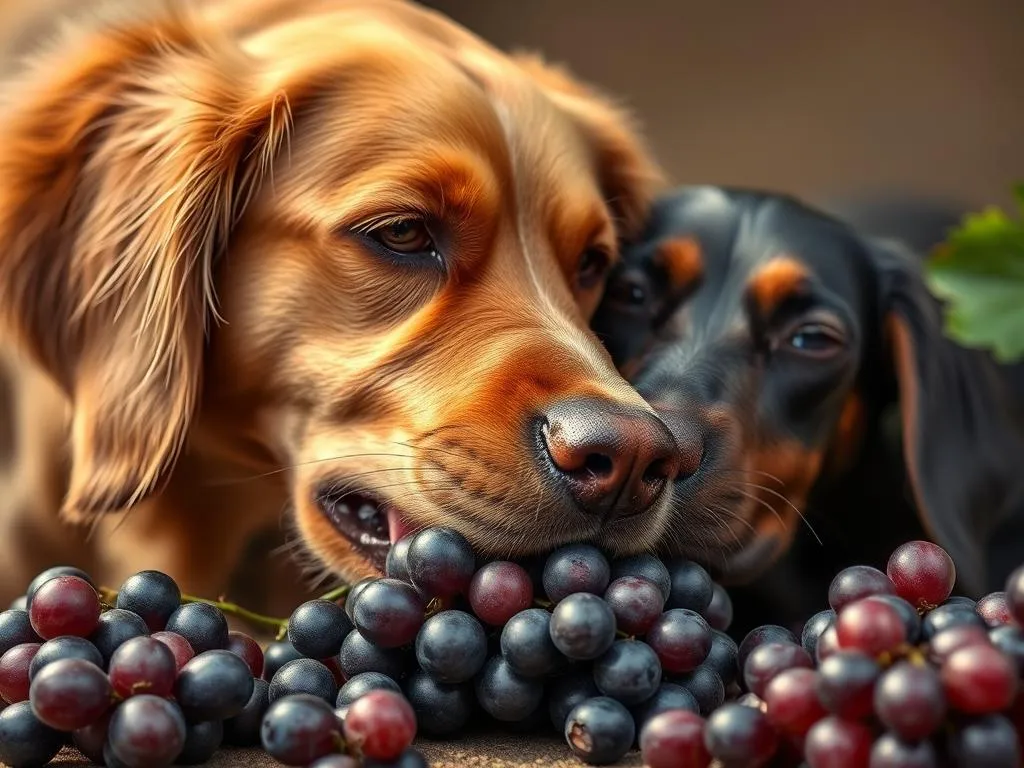
Introduction
Dog health care is a crucial aspect of pet ownership that every dog owner must prioritize. A well-balanced diet plays a significant role in ensuring that our furry friends lead happy and healthy lives. However, there are common concerns surrounding dog diets, especially regarding toxic foods that can pose serious risks to their health. One such food that often raises questions among pet owners is grapes. Can dogs eat grapes? The answer may surprise you, and understanding the implications of feeding grapes to dogs is essential for their well-being.
In this article, we aim to inform pet owners about the risks associated with grapes and provide guidelines for safe feeding practices, ensuring that your beloved canine remains healthy and safe.
Understanding Dog Nutrition
Importance of a Balanced Diet
A balanced diet is vital for dogs, just as it is for humans. Dogs require a mix of proteins, fats, carbohydrates, vitamins, and minerals to thrive. Proteins are essential for muscle development and immune function, while healthy fats provide energy and support skin and coat health. Carbohydrates serve as a valuable energy source, and vitamins and minerals play crucial roles in various bodily functions.
Feeding your dog a proper diet contributes significantly to their overall health, enhancing their quality of life, energy levels, and longevity. It is imperative to choose high-quality dog food that meets the nutritional needs of your specific breed, age, and health status.
Common Foods That Are Safe for Dogs
While some foods can be harmful, there are plenty of fruits and vegetables that are safe and nutritious for dogs. Some examples of dog-friendly treats include:
- Apples: A great source of vitamins A and C, along with fiber. Remember to remove the seeds and core.
- Carrots: Low in calories and high in fiber, carrots are excellent for dental health.
- Blueberries: Packed with antioxidants, blueberries can be a delightful treat.
- Pumpkin: Rich in fiber and beneficial for digestion, plain cooked pumpkin can be a healthy addition.
Incorporating these safe options into your dog’s diet can provide essential nutrients while keeping their meals exciting.
The Risks of Feeding Dogs Grapes
Overview of Grape Toxicity
When it comes to the question, can dogs eat grapes, the short answer is no. Grapes and raisins have been linked to acute kidney failure in dogs, although the exact substance responsible for this toxicity remains unknown. Even small amounts can cause serious health issues, making it critical for dog owners to be aware of the dangers associated with these seemingly innocent fruits.
Symptoms of Grape Toxicity
Recognizing the symptoms of grape toxicity is vital for prompt action. Common signs that your dog may have ingested grapes include:
- Vomiting: This can occur within hours of ingestion.
- Diarrhea: Loose stools may follow vomiting.
- Lethargy: A noticeable decrease in energy levels or enthusiasm for activities.
- Loss of Appetite: A sudden refusal to eat can be a warning sign.
- Abdominal Pain: Your dog may show discomfort or pain in their stomach area.
If you notice any of these symptoms after your dog has consumed grapes, it is crucial to act quickly.
Case Studies and Reports
Numerous documented cases highlight the dangers of grape consumption in dogs. Research indicates that even a single grape can be harmful, with some dogs showing severe reactions to small quantities. A veterinary report noted that a medium-sized dog experienced acute kidney failure after consuming just a handful of grapes. These alarming statistics emphasize the importance of keeping grapes out of reach and informing others about the risks.
What to Do If Your Dog Eats Grapes
Immediate Actions
If your dog consumes grapes, the first step is to contact your veterinarian immediately. Knowing the amount ingested can help the vet assess the situation more effectively. Even if your dog appears fine, it is always better to err on the side of caution.
Veterinary Treatment Options
Veterinary treatment will depend on how long ago the grapes were consumed and the amount ingested. Possible treatments may include:
- Inducing Vomiting: If the ingestion was recent, the vet may induce vomiting to prevent further absorption of toxins.
- Activated Charcoal: This may be administered to help absorb any remaining toxins in the gastrointestinal tract.
- Intravenous Fluids: To support kidney function and prevent dehydration, fluids may be given.
Timely intervention is critical, as the sooner treatment begins, the better the chances of recovery.
Preventing Grape Exposure
Safe Food Practices
Keeping grapes and other toxic foods out of reach is essential for preventing accidental ingestion. Here are some tips:
- Store Grapes Safely: Keep grapes and raisins in cabinets or high shelves where your dog cannot access them.
- Educate Your Family: Ensure that everyone in your household understands the dangers of grapes.
- Alternative Snacks: Offer safe alternatives, such as carrots or apple slices, as treats to satisfy your dog’s cravings.
Educating Family and Friends
Informing family and friends about the dangers of grapes is essential. If you have visitors or pet sitters, make sure they are aware of what foods are safe and which ones to avoid. Clear communication can prevent unfortunate accidents and keep your dog safe.
Other Foods to Avoid
Common Toxic Foods
In addition to grapes, several other foods are harmful to dogs. Here’s a brief overview of some common toxic foods:
- Chocolate: Contains theobromine, which is toxic to dogs and can cause symptoms such as vomiting, diarrhea, and even seizures.
- Onions: Can damage red blood cells, leading to anemia and other health issues.
- Avocados: Contain persin, which can cause vomiting and diarrhea in dogs.
- Xylitol: A sugar substitute found in many products; even small amounts can lead to hypoglycemia and liver failure.
Resources for Safe Dog Diets
Consulting with a veterinarian or pet nutritionist can provide personalized advice tailored to your dog’s specific needs. Many reputable websites and books are available that focus on dog nutrition, offering valuable insights into safe feeding practices.
Conclusion
Understanding the importance of your dog’s diet is crucial for ensuring their health and longevity. In this article, we explored the significant risks associated with feeding grapes to dogs and highlighted the essential components of a balanced diet. Recognizing the symptoms of grape toxicity and knowing how to act promptly can save your dog’s life.
Being informed about dog diets and toxic foods is a responsibility every pet owner should take seriously. Share this information with fellow dog owners to promote better health for our furry friends. Always consult your veterinarian for any dietary concerns or questions, ensuring your dog receives the best care possible.
By prioritizing dog health care, you can help your canine companion live a long, happy, and healthy life.









